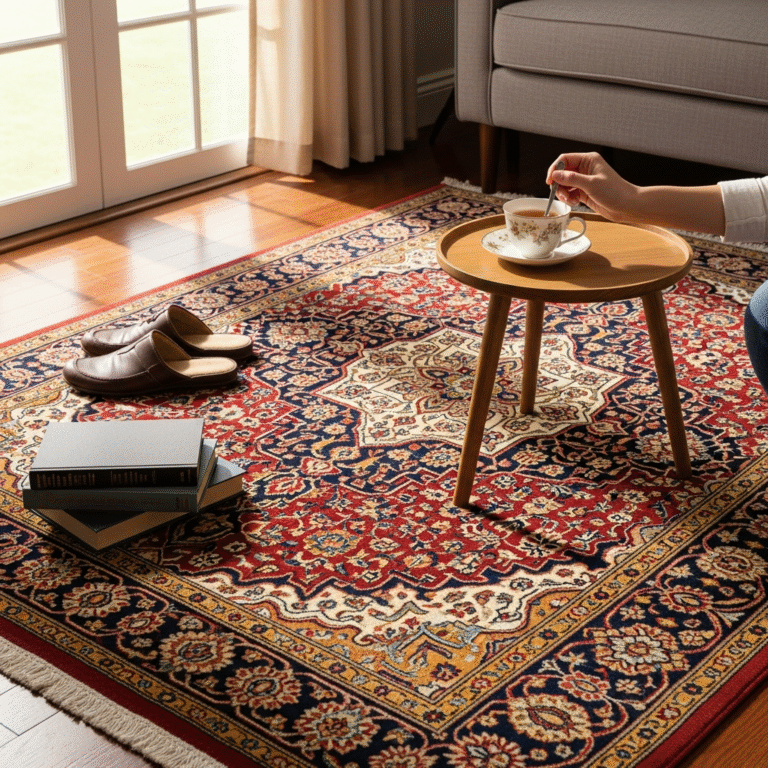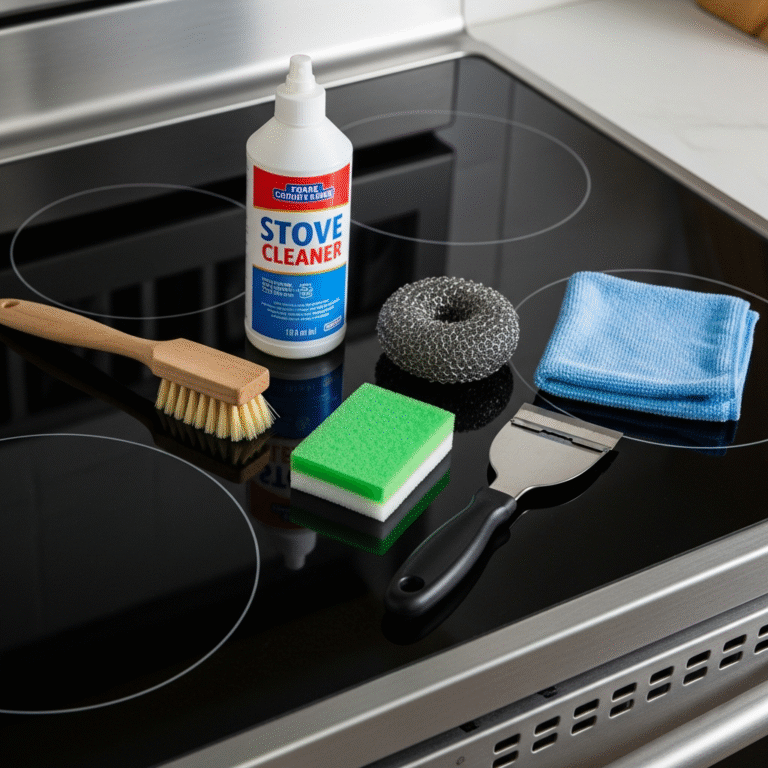The patio or deck is an extension of the home. It is an outdoor living room, a place for summer barbecues, quiet morning coffees, and evenings with friends. But unlike a living room, it is in a constant battle with the elements. It is exposed to rain, sun, snow, falling leaves, bird droppings, and the slow, creeping advance of mold, mildew, and algae. Over the course of a season, this relentless exposure can transform a beautiful, welcoming space into a grimy, stained, and even hazardous one.
Cleaning a patio or deck is not a simple wipe-down. It is a project of reclamation. It is about pushing back against the natural decay and restoring the space to a state of cleanliness, safety, and readiness. Whether you are preparing it for enjoyment in the spring or putting it to bed for the winter, a thorough cleaning is a non-negotiable part of responsible homeownership. The process requires a systematic approach, the right tools, and an understanding that different materials demand different methods.
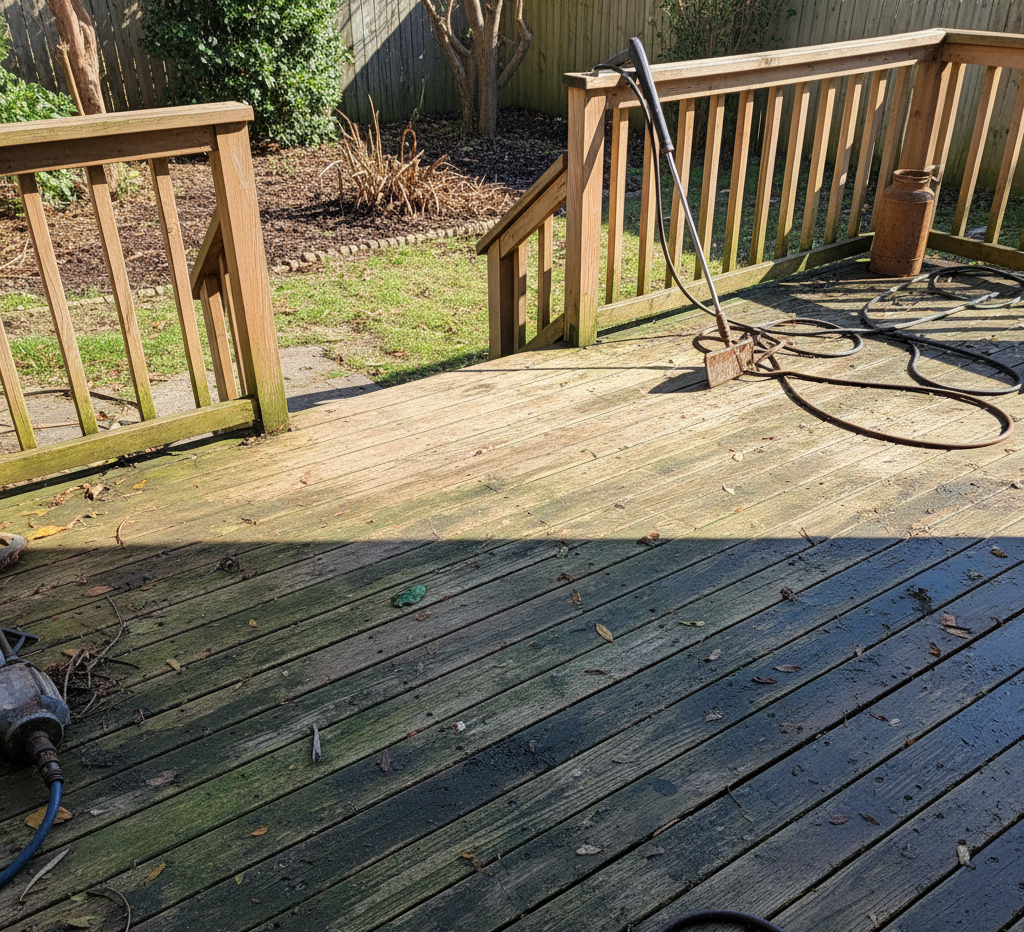
1.First Step
The first step in this project, before a single drop of cleaner is applied, is the great evacuation. You cannot clean a space that is cluttered. Everything must be removed from the deck or patio surface. This means the furniture, the grill, the planters, the umbrellas, and the outdoor rugs. This step is not just about clearing the way; it is a forcing mechanism that reveals the true state of the surfaces underneath. It uncovers the hidden stains, the patches of green algae under a planter, and the full extent of the dirt you are about to tackle.
With the space completely clear, the next step is a thorough sweep. Use a stiff-bristled push broom to remove all the loose debris: leaves, twigs, dirt, cobwebs, and anything else that has accumulated. Pay special attention to the corners and the spaces between deck boards where debris loves to hide. This initial sweep is crucial because it removes the abrasive, gritty material that could otherwise scratch the surfaces during the scrubbing phase.
Now, with a clear and swept surface, you can properly assess the situation. Look closely at the material. Is it a wooden deck, a composite deck, or a hardscape patio made of concrete, pavers, or natural stone? Identify the specific problems you need to address. Are there dark, blackish spots that indicate mold? Green, slimy patches of algae, which can be a serious slipping hazard? Dark, circular stains under where planters used to be? Grease splatters around the grill area? The answers to these questions will determine your plan of attack and the specific cleaning solutions you will need.
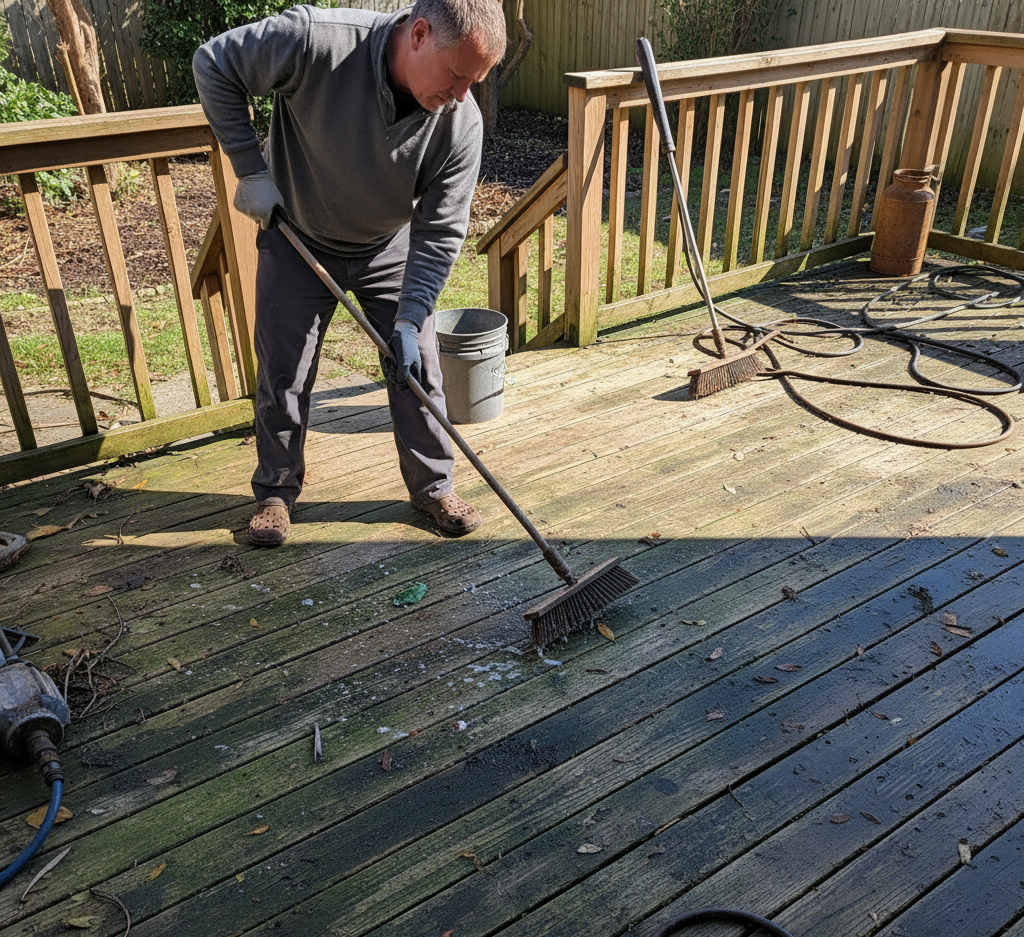
2.Wooden Decks
For wooden decks, the approach must balance cleaning power with the need to protect the wood fibers. The wrong cleaner or technique can cause irreparable damage. The gentlest method should always be the first attempt. A simple solution of a mild pH-neutral soap, like dish soap, mixed in a bucket of warm water can be surprisingly effective for light dirt. Apply the solution, scrub gently with a soft-bristle deck brush, and rinse thoroughly.
For the more common and stubborn issues of algae, mold, and ingrained dirt, a more powerful solution is needed. The best choice for a wooden deck is a cleaner based on oxygen bleach (sodium percarbonate). Unlike chlorine bleach, which is harsh, can damage wood fibers, and is harmful to surrounding plants, oxygen bleach is a non-toxic alternative that cleans by releasing oxygen ions when mixed with water. This process breaks down dirt, mold, and algae without harming the wood. To use it, mix the powdered oxygen bleach with water according to the manufacturer’s directions. It is critical to wet the entire deck surface with plain water from a hose before you apply the cleaner. A dry deck will absorb the cleaning solution too quickly and unevenly. Apply the oxygen bleach solution with a mop or a garden sprayer and let it sit on the surface for 10-15 minutes, but do not let it dry. This “dwell time” is when the chemical reaction is happening. After it has sat, use a stiff-bristled deck brush, scrubbing in the direction of the wood grain, to agitate the grime. At the end, rinse the deck completely with a hose until all the cleaner and dirt are gone.
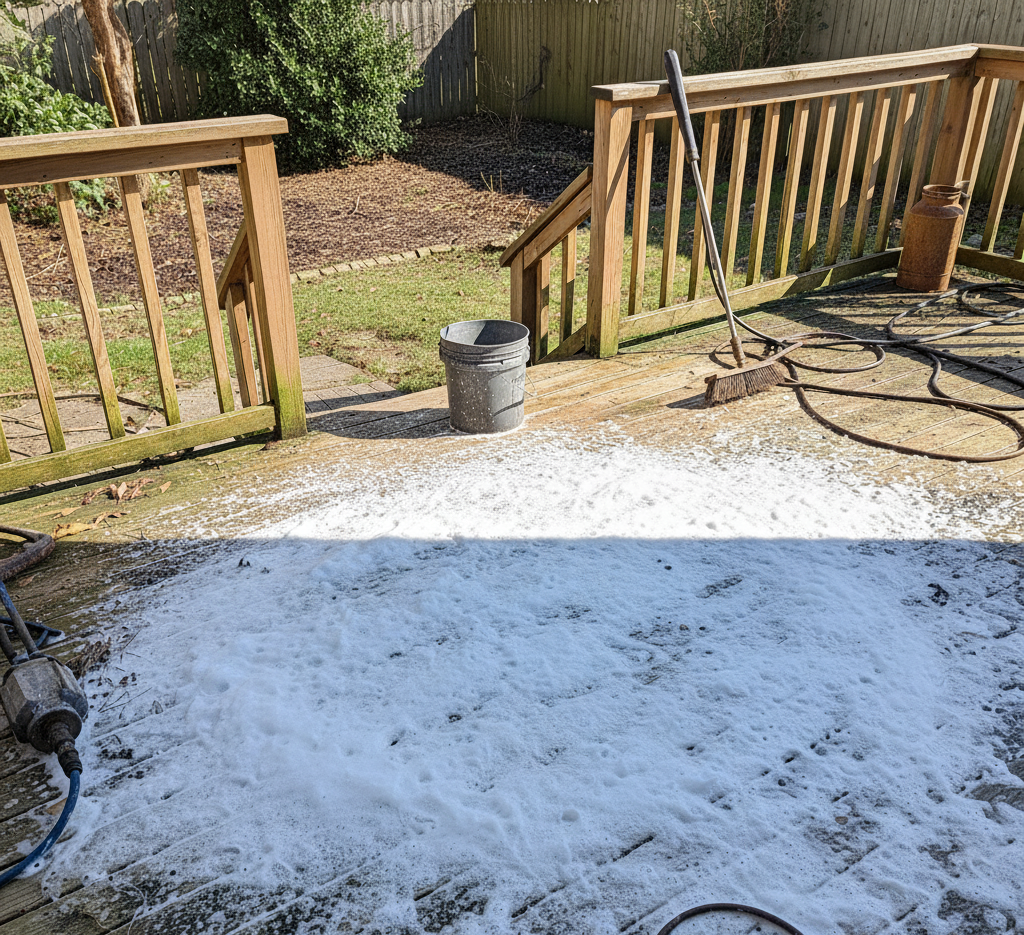
3.High Pressure Washer
The question of the pressure washer inevitably arises when cleaning decks. A pressure washer is a powerful tool that, in inexperienced hands, can do far more harm than good. A stream of water that is too powerful or held too close can easily gouge the wood, raise the grain, and create a fuzzy, splintered surface. If you choose to use one, you must do so with extreme caution. Use the lowest possible pressure setting (no more than 1200 PSI for most softwoods like pine), and use a wide, 40-degree fan tip. Keep the nozzle at least a foot away from the wood surface at all times, and use long, sweeping motions, never stopping in one spot. A pressure washer should be seen as a tool for rinsing, not for blasting away dirt. The chemical cleaner does the real work of lifting the grime; the pressure washer just washes it away.
For composite decks, the cleaning process is generally less intensive. While marketed as “low-maintenance,” they are not “no-maintenance.” They are still susceptible to mold and mildew, which can feed on the organic fillers within the composite material. A gentle scrub with a soft-bristle brush and a mild soap solution is often sufficient for general cleaning. For mold, a solution of one part white vinegar to two parts water can be effective. Avoid using abrasive cleaners or metal brushes, which can scratch and dull the surface. Pressure washing is generally safer on composite than on wood, but the same precautions of low pressure and a wide fan tip should be observed.

4.Concrete, Paving or Stone
Patios made of concrete, pavers, or stone present a different set of challenges. These hardscape surfaces can typically withstand more aggressive cleaning methods.
Concrete is a durable workhorse. For heavy-duty cleaning, a pressure washer is highly effective. To treat stains, a degreaser is essential for oil or grease spots from a grill or car. Apply the degreaser, let it penetrate, scrub with a stiff brush, and then rinse or pressure wash away.
Brick and stone pavers are also very durable. The main challenge here is often the growth of weeds and moss in the joints between the pavers. These should be pulled or scraped out before you begin cleaning. The cleaning process is similar to concrete, but be careful when pressure washing not to use a stream so powerful that it blasts away the jointing sand between the pavers.
Natural stone patios, such as those made of flagstone or slate, require the most caution. These materials can be sensitive to harsh chemicals. Never use acid-based cleaners (like muriatic acid) on natural stone, as they can etch and permanently damage the surface. Always test any cleaning product on a small, inconspicuous area first. A pH-neutral cleaner specifically designed for natural stone is the safest choice. Scrub with a soft-bristle brush and rinse thoroughly.
After the scrubbing and rinsing are complete, the final and most crucial step is to let the entire area dry completely. This can take a full day or more, depending on the weather. Once it is dry, inspect your work. Look for any missed spots or any necessary repairs, like popped nails on a deck or a cracked paver.

5.Staining or Sealing
For a wooden deck, this is also the time to consider the final, protective step: staining or sealing. A clean deck is vulnerable. Applying a quality sealer or stain is what protects the wood from moisture penetration, which leads to rot, and from the sun’s UV rays, which cause the wood to turn gray and brittle. This is a significant undertaking, but it is the single most important thing you can do to extend the life and beauty of your deck. Similarly, some types of natural stone and pavers can benefit from the application of a sealer to protect them from stains and make future cleaning easier.
Reclaiming your outdoor living space is a rewarding project. It is a methodical process of clearing, assessing, cleaning, and protecting. It transforms a neglected, dirty area back into a functional, beautiful, and safe extension of your home, ready for another season of enjoyment.

Revitalizing a weathered patio or deck is a multi-step process, requiring the right cleaning solution and technique for each specific material, from delicate wood to durable concrete. For a professional-grade clean that restores your outdoor spaces without the risk of damage, Toronto Shine Cleaning provides the specialized knowledge and equipment to make your patio and deck look their best.














